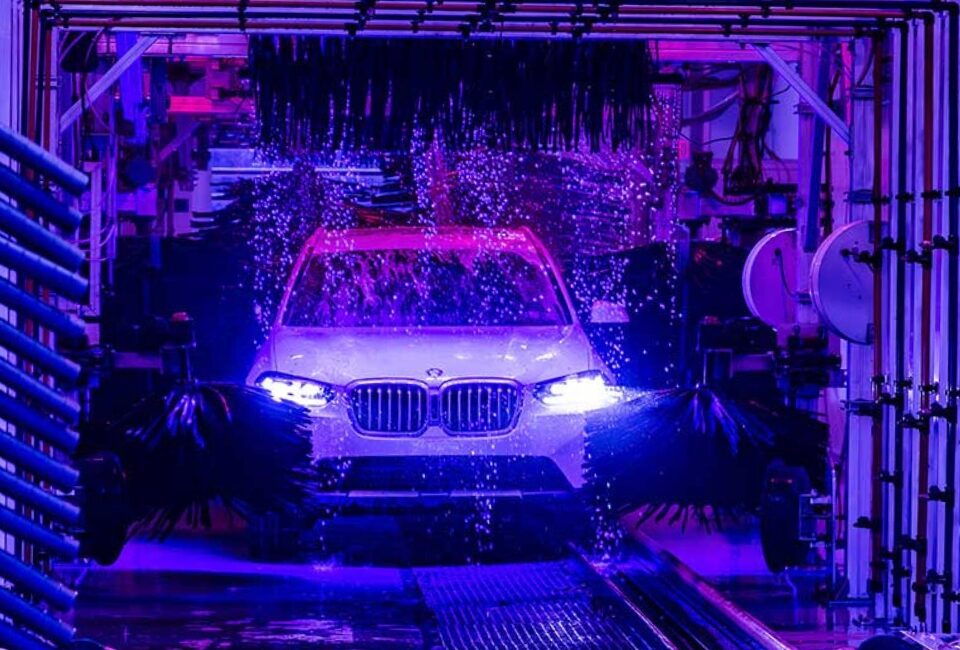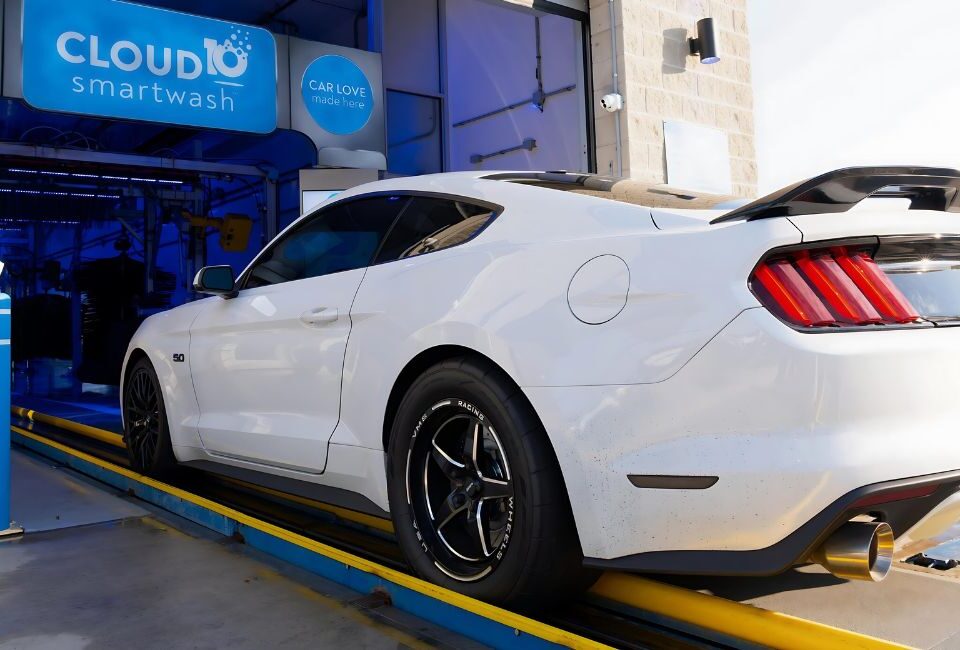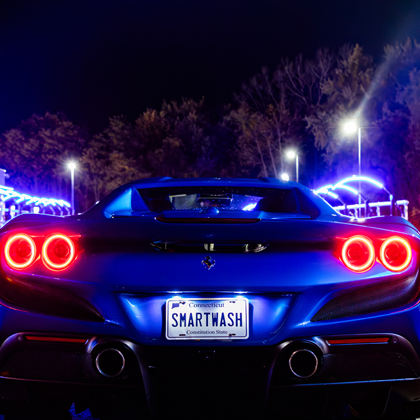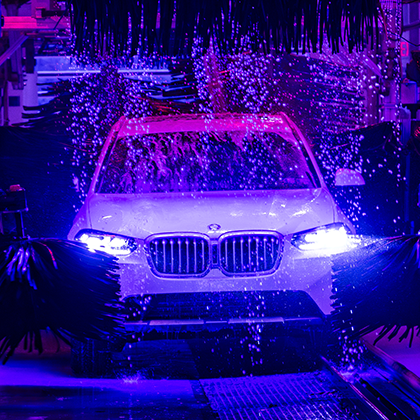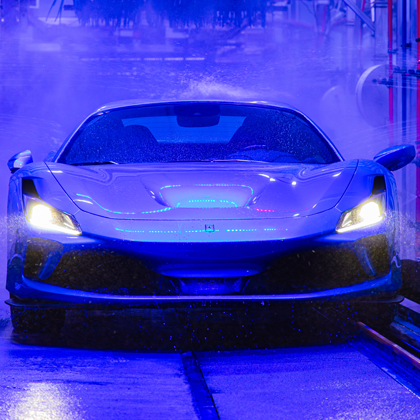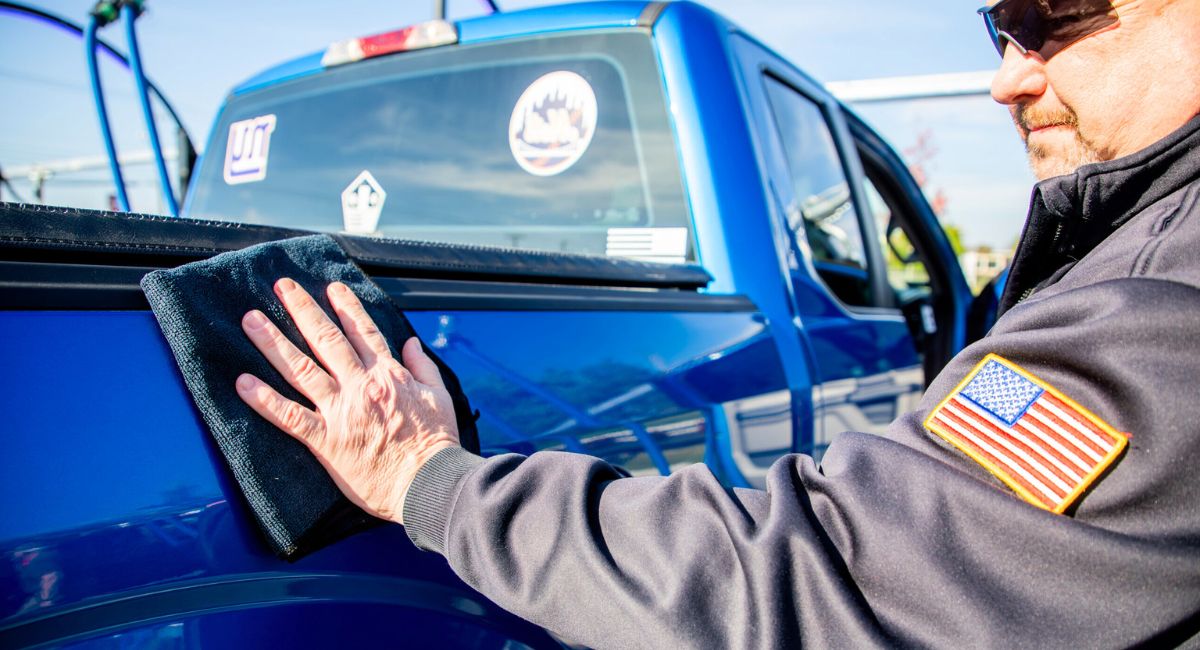
Noticed small rust spots on your car? It happens to the best of us. Rust starts off as a tiny blemish, easy to ignore—until it isn’t. Given enough time, that little spot can spread, eating away at the metal and turning a simple fix into a pricey headache.
The good news is that you can stop rust before it takes over. Catching it early means you can treat it fast and keep your car looking great for years to come. So, how do you spot rust before it becomes a problem, and what’s the best way to fix it? Let’s break it down so you can stay ahead of the rust game.
Rust Starts Small—Catch It Before It Spreads
Rust is sneaky. It starts small—just a little spot here, a tiny bubble there—and before you know it, it’s eating through your paint and weakening your car’s body. The longer you let it go, the harder (and pricier) it is to fix.
But thankfully rust doesn’t happen overnight, and if you catch it early, it’s easy to stop. The key is knowing where to look and what to watch for. Let’s talk about the early clues, trouble spots, and how rust spreads, so you can shut it down before it becomes a real problem.
Rust’s First Warning Signs: What to Look For
Rust doesn’t show up out of nowhere—it gives you plenty of warning before it becomes a real problem. If you spot any of these signs, it’s time to do something about it:
➝ Discoloration – If you see a reddish, brownish, or orange tint on metal areas, that’s rust creeping in.
➝ Bubbling Paint – If your paint looks like it’s got tiny air pockets underneath, rust is forming beneath the surface.
➝ Rough or Flaky Texture – If a spot feels bumpy, brittle, or uneven, it’s already damaging the surface.
The sooner you catch these signs, the easier it is to fix—and trust us, you want to fix it before it spreads.
What Causes Rust to Start?
Rust needs three things to form: metal, moisture, and time. Your car’s paint acts as a protective shield, but once that barrier is broken, rust gets to work. Here’s what speeds up the process:
• Road salt – Great for melting ice, terrible for your car’s metal.
• Rain & humidity – Moisture that gets trapped in small crevices creates the perfect rust-growing environment.
• Small scratches & paint chips – Even tiny damage exposes the metal and gives rust a place to start.
Where Rust Loves to Hide
Rust isn’t going to show up front and center—it’s sneakier than that. It creeps into the spots you least expect, slowly eating away at your car while you’re none the wiser. One of its favorite hideouts? Wheel wells. These areas take constant abuse from road grime, water, and salt, making them the perfect breeding ground for rust. Then there’s door edges, where small paint chips from daily use create easy access points for corrosion. The undercarriage? It’s exposed to moisture every time you drive. And don’t ignore chipped paint—if bare metal is showing, rust is already planning its takeover.
The Rust Progression Stages
Rust doesn’t stop once it starts—it just keeps getting worse. Here’s what happens if it’s left untreated:
1. Surface Rust – A light layer on top of the metal. Easy to fix if caught early.
2. Scale Rust – The rust starts eating into the metal, weakening the structure.
3. Penetrating Rust – The worst stage. The metal is completely corroded, leading to holes and serious damage.
Once rust reaches penetrating stage, it’s no longer just a cosmetic issue—it can affect the safety and lifespan of your car. That’s why catching it early really matters.
Rust might be persistent, but it’s not unbeatable. The key is regularly checking for early signs, keeping an eye on rust-prone areas, and taking action as soon as you see it. The sooner you deal with rust, the easier and cheaper it is to fix.
Think You Can Fix Rust at Home? Read This First
So, you’ve spotted rust on your car, and you’re thinking about tackling it yourself. Sand it down, slap on some paint, and call it a day, right? Not so fast. DIY rust removal isn’t as simple as it seems, and if it’s done wrong, you could end up making the problem worse.
Before you reach for that sandpaper, let’s talk about the risks of at-home rust removal. From hidden damage to short-term fixes that don’t last, here’s what you need to know before taking matters into your own hands.
Temporary Fixes vs. Permanent Solutions
Sanding off rust and painting over it might seem like a quick fix, but most DIY methods don’t actually stop rust from coming back. Rust isn’t just a surface issue—it’s a chemical process that keeps spreading unless it’s treated properly.
What happens when you rely on a quick fix?
➝ Rust keeps growing underneath the paint, meaning it’ll bubble up again in no time.
➝ Moisture gets trapped, accelerating corrosion instead of stopping it.
➝ The problem spreads, turning a small rust spot into a much bigger headache.
A proper rust removal process involves completely eliminating the corrosion, sealing the metal, and using high-quality protection to prevent it from returning. Anything less? It’s just hiding the problem for now.
The Hidden Damage Factor
Rust loves to work its way deeper into the metal, often far beyond what you can see. By the time it becomes visible, there’s a good chance the damage underneath is much worse than it looks.
That means sanding and repainting alone won’t solve the issue. Without a proper rust treatment, you’re only fixing what’s on the surface while the corrosion continues to weaken your car’s structure underneath.
Common DIY Mistakes That Make Rust Worse
Rust removal might seem straightforward, but one wrong move can make things much worse. Here are some of the most common DIY mistakes:
• Sanding Too Aggressively – Removing rust is good, but over-sanding can thin out the metal, making it weaker and more prone to future rust.
• Using the Wrong Sealants – Not all rust sealers are created equal. Cheap or ineffective products might temporarily cover the rust, but they won’t stop it from coming back.
• Damaging Surrounding Paint – Sanding or applying harsh chemicals can accidentally strip off nearby paint, exposing even more metal to potential rust.
• Skipping the Prep Work – A rushed job means moisture and contaminants get trapped under the new paint, making rust return even faster.
DIY rust removal might seem like an easy, budget-friendly fix, but it rarely solves the problem for good. Without the right tools, treatments, and protection, rust will keep coming back, and each time, it gets worse.
Here’s the Right Way to Get Rid of Rust on Your Car
Rust has a way of sticking around no matter how hard you try to get rid of it. A little sanding, a fresh coat of paint, and for a while, it looks like it’s gone—until it pops back up, worse than before.
That’s because rust isn’t just sitting on the surface. It’s working its way deeper into the metal, and without the right treatment, it’s going to keep spreading. That’s why professional rust removal isn’t just a fix—it’s the best way to stop rust in its tracks and keep your car looking great for the long haul.
Precision Removal: No Missed Spots, No More Rust
Scraping off rust with sandpaper might seem like it’s doing the job, but if you don’t get every bit of corrosion, it’ll just come right back. Professionals have the right tools, the right treatments, and the experience to remove rust properly—without harming the surrounding paint.
Here’s why expert rust removal is the better way to go:
• They know how deep the rust goes and remove it at the source.
• They use industry-grade tools that get rid of corrosion without damaging your car’s finish.
• They prep the area correctly so the repair actually lasts instead of peeling or bubbling a few months later.
Rust spreads fast. Getting rid of it the right way makes all the difference.
Sealing and Protecting: Keeping Rust From Coming Back
Fixing rust isn’t just about cleaning it up—it’s about making sure it stays gone. That’s where professional rust treatments set themselves apart from DIY fixes. After removing rust, pros seal the metal with high-quality coatings that protect it from moisture, salt, and future corrosion.
Without this step, rust has an easy way back in. A pro fix locks it out, so you’re not dealing with the same problem over and over.
The Power of Prevention: How Pro Coatings Protect Your Car
If you really want to keep rust away, professional-grade coatings like ceramic or graphene-based protectants are the way to go. These advanced treatments act as a shield, preventing moisture and contaminants from settling into your car’s surface.
They work so well because:
➝ They repel water, road salt, and dirt, which are the biggest culprits behind rust.
➝ They add a layer of protection against scratches and chips that expose metal.
➝ They last longer than DIY waxes and over-the-counter sealants, keeping your car protected for the long run.
Rust doesn’t fix itself. Ignoring it or trying quick at-home fixes only buys you time before it gets worse. The best way to deal with rust? Get it treated properly, sealed against future damage, and keep up with regular maintenance. Your car will thank you for it.
Small Rust Spots on Car Now = Big Repairs Later (Unless You Do This)
Rust isn’t something you notice right away, but once it shows up, it doesn’t go away without a fight. The good news? You can stop rust before it even has a chance—with the right care, you’ll never have to deal with ugly orange spots creeping across your car.
So, what’s the game plan? Regular smartwashes, protective coatings, and a little attention to detail. A few simple habits can keep your car looking fresh and rust-free for years.
Wash Smart, Stay Rust-Free
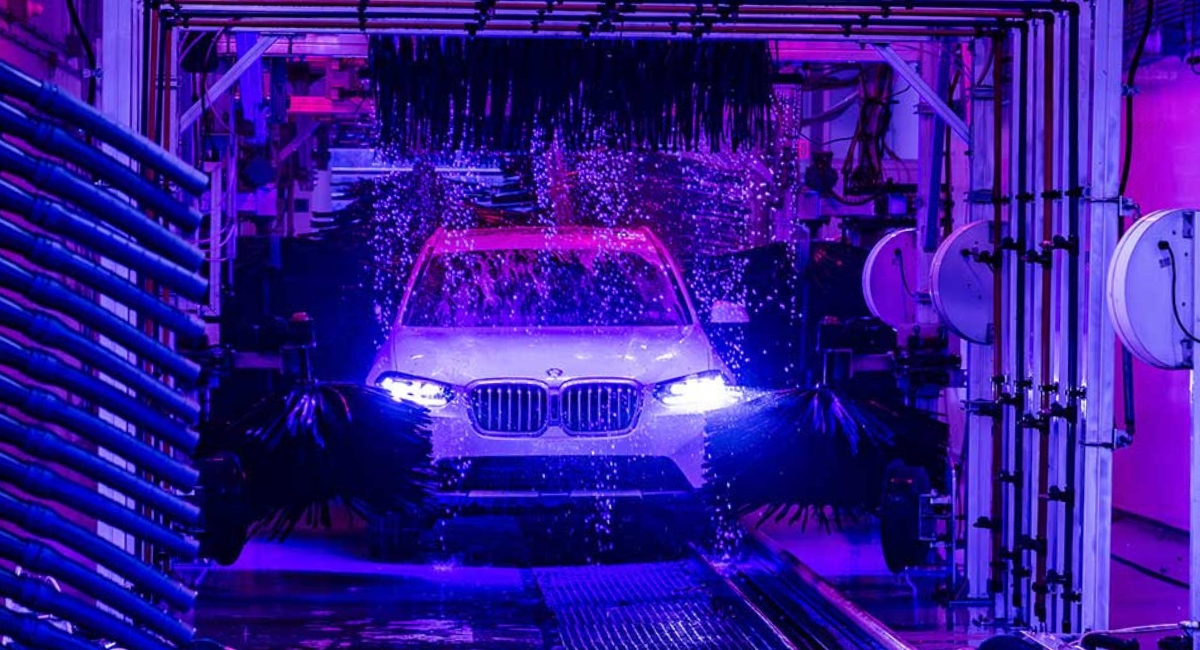
Dirt, salt, and moisture love to stick around—and when they do, rust isn’t far behind. The best way to stop rust before it even has a chance? Wash your car regularly. But not just any wash—a smartwash.
At Cloud10 smartwash, we’re not just about cleaning cars. We’re about protecting them, preserving their value, and making car care easier and smarter. We saw the gaps in traditional car washes—inefficient, outdated, and not designed with long-term protection in mind. So, we built something better.
A smartwash is next-level car cleaning that:
➝ Removes salt, grime, and moisture buildup that can lead to rust before it ever has a chance.
➝ Uses precision cleaning technology to get into all those hard-to-reach areas where rust loves to hide.
➝ Is engineered to be tough on dirt but gentle on your car’s finish, so you never have to worry about damage.
➝ Gets you in and out fast, so regular washing doesn’t feel like a hassle.
The cleaner your car, the harder it is for rust to take hold. And if you’re keeping it fresh with a smartwash, you’re already ahead of the game.
Protective Coatings: The Extra Layer Your Car Needs
Washing keeps rust-causing dirt off your car, but sealing the surface takes it one step further. Enter Fusion Graphene and Ceramic washes—your car’s best defense against moisture, salt, and all the little things that wear down your paint over time.
Fusion Graphene and Ceramic washes go beyond regular wax by:
➝ Repelling water, which means rust-causing moisture doesn’t stand a chance.
➝ Making your car’s surface ultra-smooth, so dirt and grime slide right off.
➝ Lasting longer than traditional wax, keeping your car protected for months.
It’s like putting your car in a protective bubble—only, you know, way cooler.
Routine Inspections: Catching Trouble Before It Starts
Even with regular washes and a strong protective shield, small scratches and chips can open the door for rust. The trick? Stay ahead of it by checking your car for damage every now and then—especially after rough weather or road trips.
Here’s what to do:
• Look for tiny paint chips and scratches in high-risk areas like wheel wells, door edges, and bumpers.
• Touch up small nicks quickly so moisture doesn’t seep in.
• Give your undercarriage a check—it’s easy to forget, but rust loves to hide there.
A few minutes of checking every once in a while can save you a whole lot of trouble later on.
Want to make rust prevention effortless? Join our CLOUDClub membership. Unlimited washes mean you’re always rinsing off the grime, salt, and moisture that lead to rust—without even thinking about it. Just roll in, roll out, and enjoy a spotless, protected ride every time.
Why Let Rust Win? Protect Your Car Like a Pro
Small rust spots on your car might not seem like a big deal… until they spread, and suddenly you’re looking at costly repairs. Rust doesn’t wait around—it takes hold fast, especially when dirt, salt, and moisture are left sitting on your car. But you don’t have to let it win! Regular smartwashes, a solid protective coating, and keeping an eye out for small chips and scratches will keep your ride looking fresh and rust-free.
So, what’s next? Stop by your nearest Cloud10 smartwash and give your car the care it deserves! With our high-tech smartwash system and top-tier protective coatings, you’ll wash away rust-causing grime before it can do damage. Easy, fast, and totally worth it.
FAQs
How do I prevent small rust spots on my car before they start?
The best way? Keep your car clean! Dirt, salt, and moisture speed up rust, so regular washes remove those troublemakers before they can do damage. Adding a protective coating also helps create a barrier against the elements.
Can washing my car too often make rust worse?
Nope! In fact, the opposite is true. Rust thrives when moisture and grime are left sitting on your car. A good wash (especially with rust-preventing treatments) washes away corrosive elements before they can take hold. Just make sure to dry your car properly afterward!
Can I fix small rust spots myself?
You can, but it’s tricky. Sanding and painting over rust might seem like a fix, but if you don’t treat the corrosion properly, it’ll come back stronger. A professional treatment removes rust completely, seals the area, and prevents future damage.
How often should I get a professional rust-prevention treatment?
That depends on how much exposure your car gets to rain, road salt, and rough conditions. A high-quality ceramic or graphene coating can last months to years, but regular touch-ups and washes help keep rust from ever becoming an issue.
What makes a smartwash better than a regular car wash for rust prevention?
A regular wash might rinse off some dirt, but we go deeper. Our smartwash targets those sneaky spots where grime loves to hide—wheel wells, undercarriages, and door edges—so rust never gets a chance to start. Plus, our high-powered drying system makes sure no leftover moisture sticks around.



